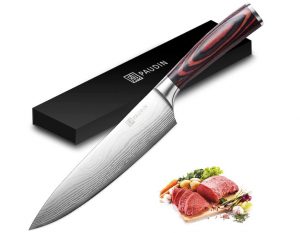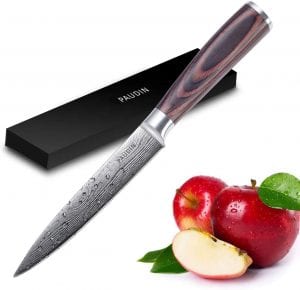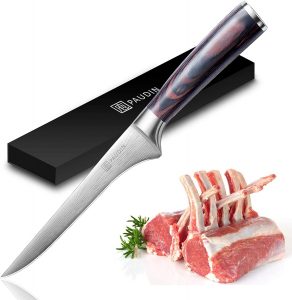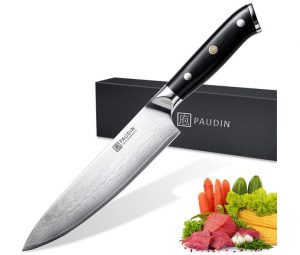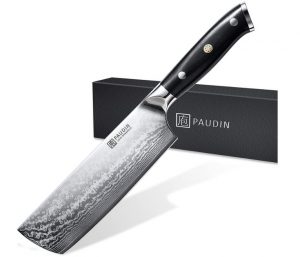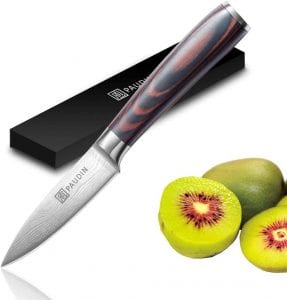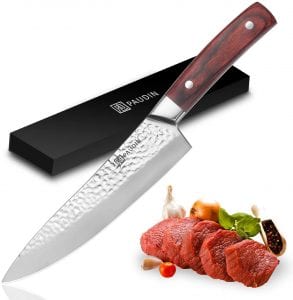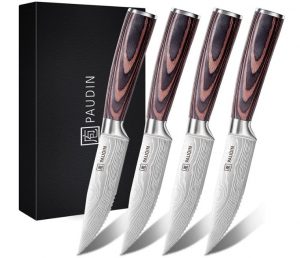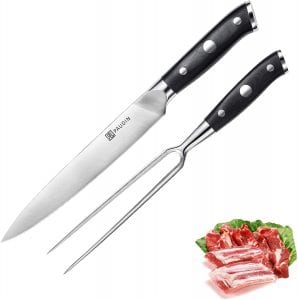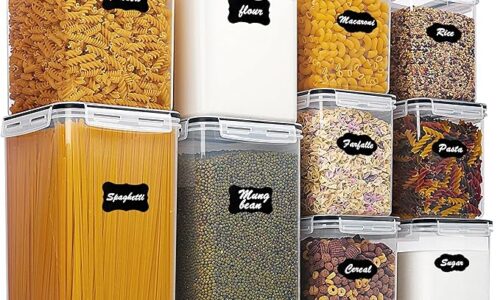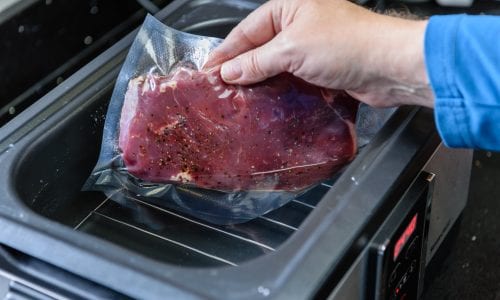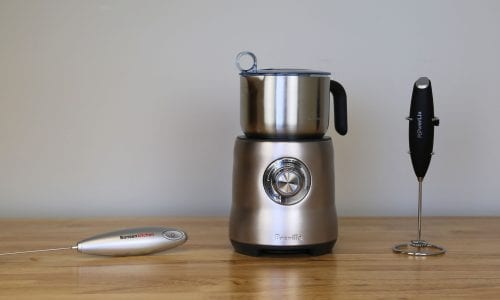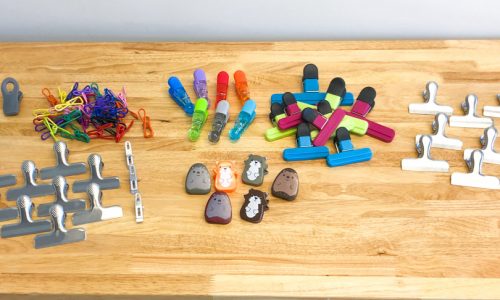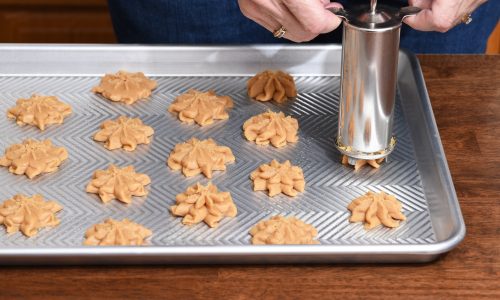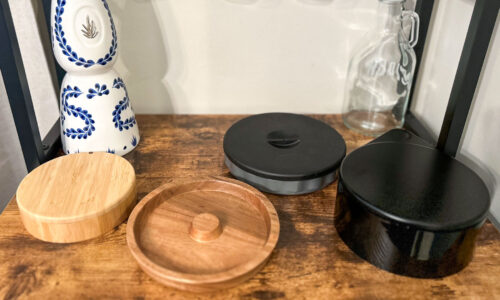The Best Paudin Knives
We looked at the top 9 Paudin Knives and dug through the reviews from 10 of the most popular review sites including and more. The result is a ranking of the best Paudin Knives.
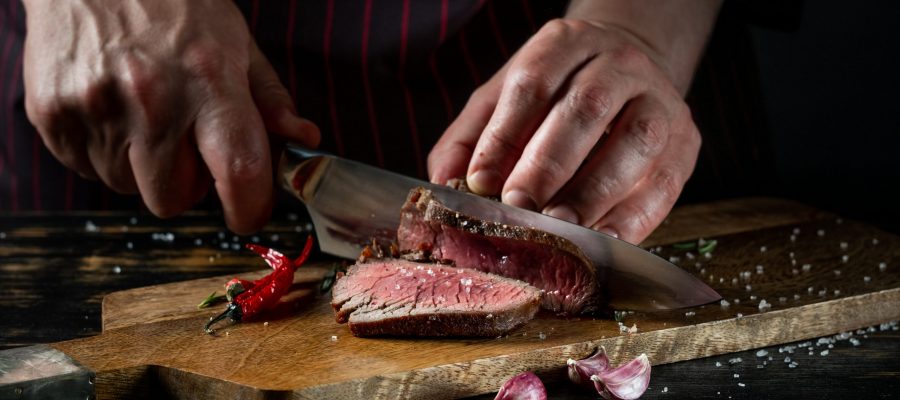
Our Review Process
Don't Waste Your Money is focused on helping you make the best purchasing decision. Our team of experts spends hundreds of hours analyzing, testing, and researching products so you don't have to. Learn more.
Our Picks For The Top Paudin Knives
- 1. PAUDIN Ultra-Sharp Anti-Rust Chef’s Knife, 8-Inch
- 2. PAUDIN All-Purpose Edge Retention Utility Knife, 5-Inch
- 3. PAUDIN Premium Professional Boning Knife, 6-Inch
- 4. Paudin Military-Grade Damascus Chef’s Knife, 8-Inch
- 5. PAUDIN Damascus Cleaver Nakiri Knife, 7-Inch
- 6. PAUDIN Pakkawood Handle Paring Knife, 3.5-Inch
- 7. PAUDIN Pro Kitchen Carbon Hammered Chef Knife, 8-Inch
- 8. PAUDIN Ergonomic Easy-Clean Steak Knife Set, 4-Pack
- 9. PAUDIN Chef Recommended Carving Knife & Fork Set, 8-Inch
The handle on this PAUDIN knife is both ergonomic and anti-slip to keep you comfortable and safe while you chop. The 8-inch blade is made from high-carbon stainless steel to provide durability even with frequent use. The ultra-sharp edge promises reliable cuts whether you're chopping vegetables or meats.
Patterned HandleThe ergonomic handle on this knife gives it a classy, unique look that will have it standing out in your knife drawer.
This chef utility knife is stunning to look at, as PAUDIN added design elements to the blade itself that couples nicely with the wooden handle. The knife is also made of high quality stainless steel that ensures a good edge.
Beautiful Utility KnifeThis chef utility PAUDIN knife looks good and cuts well enough to be one of your most used knives.
Whether you're a professional or a home chef, this PAUDIN knife is a must-have tool. It features an ergonomic handle made from a soft pakkawood. The blade is forged from a German stainless steel, so you can count on it being strong and resisting rust and corrosion.
Comfortable to HoldUse this PAUDIN knife to fillet fish, trim meat or even quickly slide through tomatoes.
If you're looking for an all-purpose knife for your kitchen, this PAUDIN knife is it, providing reliable cutting for a wide variety of meats and vegetables. The blade is made from Damascus steel with a total of 67 layers to provide sharpness cut after cut. The lightweight handle is comfortable while also being durable, thanks to three rivets holdin...
All-Purpose UseThis versatile knife chops, slices, minces and dices a wide range of food to give you an all-in-one kitchen solution.
Buying Guide
Although it’s a newer brand, Paudin has emerged as a serious contender in the cutlery space in the past couple of years. The company specializes in using top-quality materials to make knives that have staying power.
The blades on Paudin’s knives are made of high-carbon German or Japanese stainless steel to be able to withstand contact with food and moisture. As long as you handwash the knives after each use, they should hold up without staining, rusting or dulling.
Paudin only sells its products online, which keeps costs at a minimum and allows them to focus on providing top quality at a lower price than if they dealt with retail distribution. In addition to knives and knife sets, Paudin also sells magnetic knife blocks that you can use to store your knives between uses.
With any knives, it’s important to pay close attention to the cleaning instructions. You can’t simply toss your knives in the dishwasher and hope for the best. Doing that will shorten the lifespan and reduce the sharpness of the blade. Regular stainless-steel blades can be washed in hot water and dish soap, but high-carbon steel shouldn’t be passed under hot water. Instead, wipe it with a clean cloth after each use. Dry your knife immediately after cleaning it.
In addition to how you’ll clean it, you should also consider how you’ll store it. You can use a magnetic knife block, but a standard knife block with slots will work, as well. If you’d prefer to store it in a drawer, make sure to keep it clear of dust and debris. A cloth bag can also be a great way to store your knives if they’re drawer-bound.
Why we recommend these paudin knives?
Products Considered
Products Analyzed
Expert Reviews Included
User Opinions Analyzed
Our experts reviewed the top 9 Paudin Knives and also dug through the reviews from 10 of the most popular review sites including and more. The result is a ranking of the best of the best Paudin Knives.
DWYM is your trusted roduct review source. Our team reviews thousands of product reviews from the trusted top experts and combines them into one easy-to-understand score. Learn more.
What to Look For
- If you don’t already have a knife set in your kitchen, there are several must-haves. A chef’s knife can be a great multipurpose tool, helping you with everything from chopping vegetables to slicing meat. A paring knife will help you with peeling and mincing, while a set of steak knives will be essential tableware.
- If you regularly slice bread, a serrated knife is a must. It’s built with a blade that cuts through the softer surface without damaging the bread.
- The blade plays a direct role in how efficient your knife will cut. Look for one made of high-quality steel that promises sharpness. A knife sharpener can give you a hand if your knives start to dull, though.
- Don’t discount the importance of the handle. A lightweight, ergonomic design will help keep your hand comfortable, reducing fatigue that can lead to accidents. Also look for a knife with a handle that promises nonslip surfacing.
- Most knives are made from stainless steel, which is resistant to rust. Stainless steel is an iron alloy with at least 10.5 percent chromium. Sometimes a little nickel or molybdenum is mixed in. A step higher are high-carbon stainless-steel knives, which bring about 0.5 percent to 2 percent carbon into the mix.
- You may feel tempted to buy a full knife set, but it’s better to buy what you need, as you need it. You’ll then make sure you buy high-quality individual knives rather than going for the cheaper options that are often boxed up and sold as complete sets.
- Paudin specializes in high-quality, durable handles, but pay close attention to how they’re built. A full-tang handle has the steel of the blade extending the full length, including the handle, giving you more leverage. With a partial-tang knife, the steel extends only partway into the handle, although this can vary from one knife to the next. Rivets can also keep the handle intact even during intense use.
More to Explore
Throughout the history of mankind, knives have played a role in everyday life. A sharp-edged tool was found among the Oldowan tools in East Africa, which are thought to date back 2.5 million years. Made from stone cobbles, these early knives were created by knocking off several flakes using another rock that was used as a hammer. During that time, they were likely used to butcher animals, as evidenced by the marks that can be found on the bones that have been discovered from that time. Knives continued to be made from rocks over the years, only switching to bronze, copper, iron and steel once manufacturing and metallurgy made it possible to make them.

